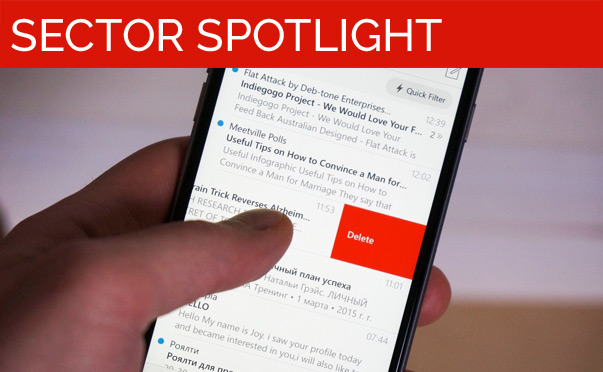Making Your Email Marketing Strategy Student Friendly
In the 1990s, when emails were new, everybody was impressed by how quickly we could communicate with colleagues, clients, family and friends. Communication became easy, and Meg Ryan and Tom Hanks made a whole film about how exciting it was to receive notifications in your inbox. Today however, the scene has changed. We get around a dozen email notifications on our smartphones every day, and more often than not, those emails are immediately deleted. Unless emails are personalised, and addressed directly to us, we’re not going to open them. This rule applies not only to the working population, but to students as well. Today’s youth have a very small attention span, and if you don’t use personal email marketing to grab their attention with the subject line itself, your emails are going directly into the bin.
Targeted Mails
Blast emails need to be personalised to be effective. Today, personalisation doesn’t just stop at adding the recipient’s name to the email body. The content of the email itself should be something that catches the reader’s attention. If a student who has expressed interest in your Robotics programme receives an email about your Art History programme, you’re likely to find yourself in somebody’s Junk folder. If you want to increase your click through rates (CTR), you’re going to have to use targeted email marketing.
Research shows that personalised email targeting at the persona level can increase your CTR by 16%. However, persona targeting is only the first level of personalisation. If you really want to get the best out of your email marketing scheme, you need to segment your email database and make targeted email marketing lists, so that people on your database only receive those emails that are relevant to them.
Here’s a quick guide that you can use to make your email marketing content student friendly by using targeted mails:
1. Gather Information
If you really want your leads to click through your emails, you’re going to have to know them. You can use online surveys, forms, and back-end data collection to learn more about your digital visitors. As you continue to collect relevant data, you will be able to refine your targeted mailing lists. You can use smart lists to automatically add your leads to the relevant list based on certain criteria. This way, if your lead is interested in more than one specific topic, he or she will receive mails from two or more lists.
2. Determine Your Lead’s Place
As a digital visitor continues to interact with you, you will be able to judge the kind of content they are focusing on. This will allow you to define some content and criteria behaviour that will allow you to judge where a prospect is in their enrolment journey. Some behavioural indicators could include an increase in the amount of time spent browsing your site, or shifting focus from content that has been tagged as one journey phase to the next. Sometimes, your leads may also move from online content to attending in-person events, which is an indication of where they stand with regards to their enrolment journey.
3. Aligning Your Content Based on the Lead’s Enrolment Journey
By keeping a track of where a lead is in their enrolment journey, you can truly harness the power of personalised email marketing. If a lead interacting with your page has looked up a guide on how to choose a university or school for further education, it probably isn’t a good idea to send them an application package. Instead, to get their attention, send them a video that has testimonies from current students talking about the important factors to keep in mind while making a decision about where to pursue higher education. To popularise your institution, you can put in a call-to-action link at the bottom that offers a virtual tour of the school, making the entire experience more engaging.
4. Monitor Performance
Keep a watch on the amount of emails being sent across lists and how well your emails perform. Some leads may be ignoring emails about your sports team, but might always click on emails that give details about financial assistance. Use this information to select content and email frequency for your leads. If somebody is continuously interacting with your emails at a high level, don’t wait before escalating the relationship and pushing them toward the decision phase. If you have an entire list that is not performing well, reassess the kind of information being sent to them – make sure it’s in sync with their interests.
At the end of the day, understand that people are always willing to read their emails; you just have to make it worth their while. Email marketing is a strategy that will be around for the long-run, and you need to make sure you invest well in it, so that you can beat out your competitors, and increase your email marketing returns.


